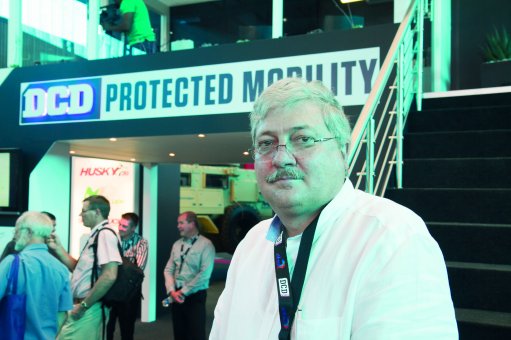
DANIE BURGER There are about 1 000 outdated underground diesel locomotives in dire need of replacement
Photo by: Duane Daws
Pretoria-based mining machinery and equipment supplier CMTI Consulting is scheduled to complete its 10 t diesel, lithium-ion hybrid locomotive by the end of next month, says MD Dr Danie Burger, adding that the company aims to supply South Africa’s “frail” underground rail networks.
The project, which has been in development for the past four years, is a response to the local mining industry’s need to replace ageing diesel locomotives. Burger says there are about 1 000 outdated underground diesel locomotives in dire need of replacement, having been designed as far back as the 1970s.
“Technology, health and safety concerns, as well as mining environments, have changed drastically in the past 40 years. Outdated equipment cannot adequately address the challenges [posed] by these changes,” he comments.
One of the main factors that informed CMTI Consulting’s decision to develop the hybrid locomotive was cost, especially owing to the current depressed commodity prices, Burger adds.
In 2012, the company started developing an electric locomotive, which used a lead-acid battery and was meant to offer an alternative to the diesel locomotives in use.
“We realised though that, on a one-for-one basis, it would not be economically viable, especially because mines would have to set up several battery-charging stations and implement charging schedules to ensure that the locomotives ran consistently.”
Thus, lithium-ion batteries were used instead, as they last longer, have a more consistent output and can be recharged more often than lead-acid batteries. Subsequently, their total cost of ownership is considerably less than that of lead acid batteries. Lithium-iron batteries are also lighter and more environment friendly.
The 10 t hybrid locomotive uses a lithium-ion phosphate (or a LiFePo4) battery pack, which operates at 460 V and has an operating life of about 6 000 cycles, compared with the 600 cycles offered by traction batteries. Additionally, the charging cycle can be completed comparatively quickly– in about 90 minutes.
The locomotive is also equipped with a regene- rative braking system, which can recoup about 30% of expended energy during operation, ensuring that mines save significantly in terms of energy costs.
Burger also points out that, in underground mining, adequate ventilation and air quality are major concerns, specifically because of blasting and locomotive exhaust fumes. The 10 t hybrid will reduce diesel fumes and improve air quality, thus improving the overall health of mineworkers.
The locomotive has been designed specifically for gold and platinum operations, and he expects there will be many export opportunities once it is market ready. Other African countries and South America are potential export destinations, as mines in these locations also use ageing equipment and have similar economic and environmental conditions to those in South Africa.
Further features of the locomotive include self-steering bogeys, alternative current permanent magnet motors, a fully enclosed cab and a triple-laminated windscreen. It uses underground railway control systems manufacturer Battery Electric’s pedestrian detection system, with the modular design ensuring easy removal of parts for maintenance and operational data logging.
Burger notes that, because the electric version of the locomotive was successfully trialled for about 18 months at gold miner Sibanye Gold’s Kloof mine’s 4 Shaft, about 70 km west of Johannesburg, most of the operational aspects have been addressed. Therefore, the diesel lithium-ion version will have a trial period of only about four months before CMTI Consulting progresses with large-scale production.